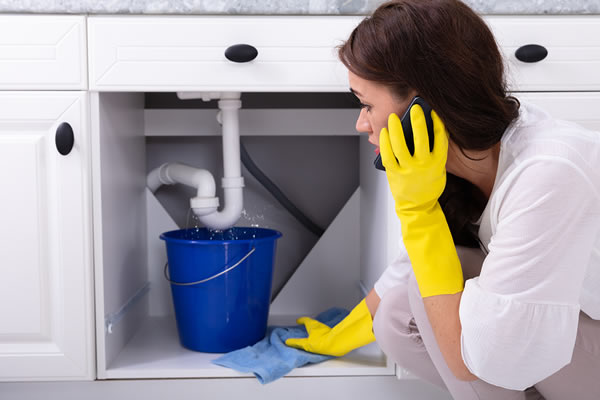Revealing Concealed Water Line Leaks: 6 Effective Detection Hacks
Revealing Concealed Water Line Leaks: 6 Effective Detection Hacks
Blog Article
They are making several great pointers relating to Detecting hidden plumbing leaks as a whole in this article underneath.

Early detection of dripping water lines can reduce a possible calamity. Some small water leakages might not be visible.
1. Take A Look At the Water Meter
Inspecting it is a proven way that helps you find leaks. If it moves, that shows a fast-moving leak. This indicates you might have a slow leakage that can even be below ground.
2. Examine Water Consumption
Examine your water bills and also track your water usage. As the one paying it, you should observe if there are any kind of inconsistencies. If you find sudden changes, regardless of your consumption coinciding, it indicates that you have leaks in your plumbing system. Keep in mind, your water expense should drop under the same variety monthly. A sudden spike in your bill indicates a fast-moving leak.
On the other hand, a steady boost monthly, even with the exact same routines, reveals you have a slow leakage that's additionally gradually escalating. Call a plumber to completely check your building, particularly if you really feel a warm location on your flooring with piping below.
3. Do a Food Coloring Test
When it comes to water consumption, 30% comes from bathrooms. If the color somehow infiltrates your dish throughout that time without flushing, there's a leak in between the tank as well as dish.
4. Asses Exterior Lines
Do not fail to remember to inspect your outdoor water lines too. Needs to water leak out of the connection, you have a loosened rubber gasket. One small leak can throw away tons of water and increase your water expense.
5. Examine and Analyze the Situation
House owners must make it a habit to examine under the sink counters as well as even inside cupboards for any type of bad odor or mold development. These two red flags show a leak so prompt focus is called for. Doing routine assessments, also bi-annually, can conserve you from a major issue.
If you know your home is already old, keep a watchful eye on your heaters, hoses, pipelines and so on. Check for discolorations and also weakening as most home appliances and pipes have a life span. They will also normally weaken because of deterioration. Do not wait for it to intensify if you presume dripping water lines in your plumbing system. Call a specialist plumber as soon as possible so you do not wind up with a horrible mess in your house.
Early discovery of leaking water lines can alleviate a possible calamity. Some small water leakages may not be visible. Checking it is a proven way that aids you find leakages. One little leak can waste tons of water and surge your water expense.
If you believe dripping water lines in your plumbing system, don't wait for it to rise.
How to Know If Your Home Has a Hidden Leak
Water Meter Reveals Inexplicable Water Usage
If you’d like to test whether or not there’s a leak somewhere in your home, you can do this using your water meter. Here is how to conduct the test:
Don’t use any water in your home for at least 30 minutes; this also means not turning on faucets or water-using appliances.
Go outside, and check your water meter for activity.
If your water meter shows that there was activity, even though no one was using any water, this proves that there is a leak in your home.Visible Mold or Mildew Growth
Leaks behind walls create moist, dark environments that allow mold and mildew to grow and thrive. Eventually, you might see mold growth forming on the wall closest to a hidden leak.
If mold is growing in an area that receives a high amount of moisture, such as a bathroom, it may simply be an indication that better ventilation is needed. However, if you see mold growth on a wall or the ceiling in an area where you would not expect, you probably have a hidden leak.
Musty, Mildew Odor
Sometimes you might not be able to see the mold or mildew that is growing as a result of a leak. However, the smell can give the problem away just as easily. If you catch a whiff of something musty, there’s a good chance that old water is collecting somewhere in your home that you can’t see.
Stained/Warped Walls, Ceilings, or Floors
When your home soaks up water, a variety of red flags can become visible, including ceiling stains, bubbling drywall, warped walls, and sagging floors. While these issues can be caused by excess humidity, they can also be signs that a pipe or plumbing connection has started leaking behind your walls.
Inexplicably High Water Bill
After a while, you get a general sense for what your water bill should be. If you own a pool or sprinkler system, your bill will tend to be higher during summer. However, if you receive a water bill that seems especially high, and you can’t figure out what caused it, then you may have a hidden leak somewhere that’s increasing your bill.
https://www.plumbingjoint.com/blog/2019/july/how-to-know-if-your-home-has-a-hidden-leak/

We were brought to that article on Top leak detection hacks from someone on another site. Sharing is caring. Who knows, you might be doing someone a favor. Many thanks for your time. Visit again soon.
Ensure plumbing integrity; reach out. Report this page